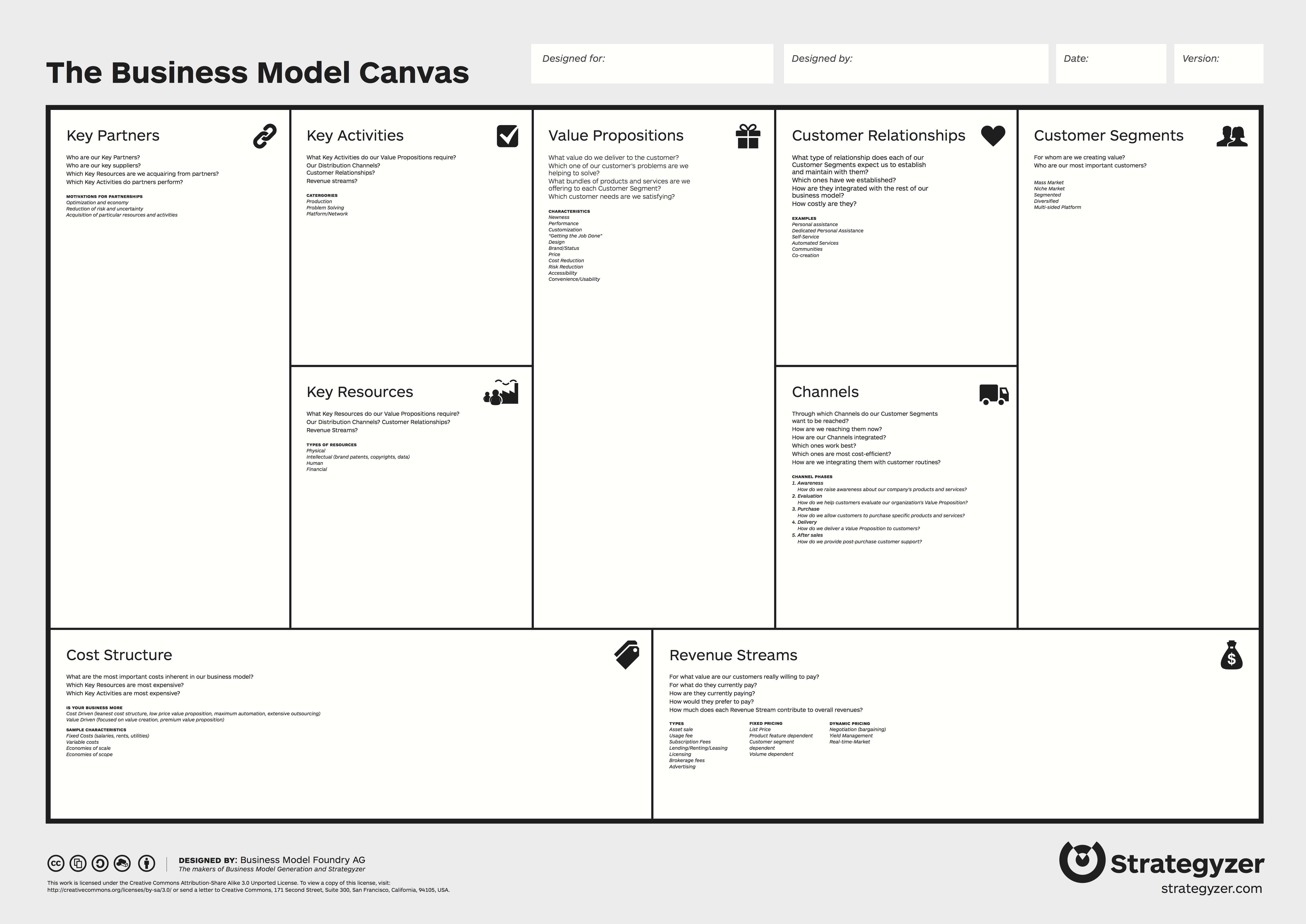Understanding the Business Model Canvas: A Comprehensive Overview.
In the dynamic landscape of business, having a clear and structured framework to analyze and develop a robust business model is essential. The Business Model Canvas (BMC) is one such tool that has gained widespread popularity for its simplicity and effectiveness. Created by Alexander Osterwalder and Yves Pigneur, the BMC is a strategic management template that provides a visual overview of a companys key components and their interrelationships. Lets delve into each element of the canvas to understand its purpose and application.

1. Customer Segments
(Customer Segments)
The first building block of the BMC focuses on identifying and defining the target audience. Understanding customer needs and preferences is crucial for tailoring products or services to meet specific market demands. By categorizing customers into segments, businesses can develop targeted strategies to address diverse needs effectively.
2. Value Propositions
(Value Propositions)
This element revolves around the unique value a company offers to its customers. A compelling value proposition outlines how a product or service solves a problem or fulfills a need better than competitors. Crafting a strong value proposition is essential for creating a competitive advantage and attracting and retaining customers.
3. Channels
(Channels)
Channels represent the ways a company reaches and delivers its value proposition to customers. This includes distribution channels, sales channels, and communication channels. A well-designed channel strategy ensures that the product or service reaches the right customers through the most effective means.
4. Customer Relationships
(Customer Relationships)
Building and maintaining relationships with customers is vital for long-term success. This element focuses on the type of relationship a company establishes with its customer segments. Whether its through personal assistance, self-service, or automated services, understanding and catering to customer preferences are key considerations.
5. Revenue Streams
(Revenue Streams)
Businesses exist to generate revenue, and this component addresses how a company monetizes its value proposition. Identifying diverse revenue streams and optimizing pricing strategies ensures financial sustainability. Revenue streams can include product sales, subscription fees, licensing, or other income sources.
6. Key Resources
(Key Resources)
To deliver value and maintain operations, businesses require various resources. This element outlines the critical assets, skills, and infrastructure needed for a business to function effectively. Identifying and allocating resources strategically is crucial for minimizing costs and maximizing efficiency.
7. Key Activities
(Key Activities)
This element focuses on the key actions a company must take to deliver its value proposition, operate efficiently, and maintain customer relationships. It involves core business processes, production activities, and other essential tasks that contribute to the overall success of the business.
8. Key Partnerships
(Key Partnerships)
In a collaborative business environment, partnerships can be a key factor in success. This element addresses the external entities and organizations that a business collaborates with to enhance its capabilities, reduce risk, or gain access to key resources. Partnerships can include suppliers, strategic alliances, or joint ventures.
9. Cost Structure
(Cost Structure)
Understanding and managing costs is fundamental to a sustainable business. The cost structure element outlines all the costs associated with operating the business. This includes fixed and variable costs, as well as economies of scale. Efficient cost management is crucial for maximizing profits and maintaining competitiveness.
The Business Model Canvas serves as a comprehensive and holistic tool for entrepreneurs, startups, and established businesses alike. Its visual nature facilitates communication and collaboration within organizations, enabling teams to align their efforts towards a common goal. By systematically examining and optimizing each canvas element, businesses can create a resilient and adaptable framework that fosters innovation, growth, and long-term success in an ever-evolving business landscape.






